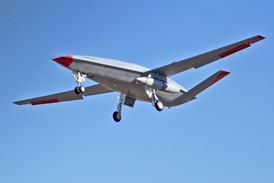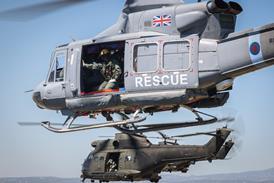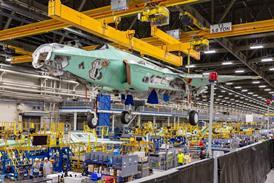Allen "Al" Novick, who helped to transform the fortunes of engine maker Allison in the 1980s, died of natural causes on 8 December 2012.
In one four-year period from 1987 to 1990, Novick's talent as an engineer, savvy as a market strategist and ability to manage complex assignments came together to produce an impressive list of achievements.
The Allison/Rolls-Royce executive started the four-year run by earning a share of his first Collier Trophy in 1987. Over the next three years, he conceived and implemented a unique propulsion architecture that contributed to winning three more.
That was also the period when Novick authored the strategy that transformed Allison from a niche supplier to military airlifters and light helicopters. Under his guidance, its portfolio of turboshaft and turboprop engines expanded to new markets including regional jets, business jets, high-altitude unmanned air vehicles, more airlifters and a new class of operational aircraft called a tiltrotor.
More impressively, Novick entered all these markets using a single engine core, a technical feat that has not been repeated successfully ever since.
All this was achieved by the Brookline, Massachusetts, native who arrived at Purdue University in 1960 with only a general interest in engineering. He recalled later that he decided to concentrate on aeronautics on a whim as he strolled by the university building. Novick remained at Purdue until 1972, receiving a doctorate in aeronautical engineering.
Novick then joined General Motors' Detroit Diesel Allison division. As a rank-and-file engineer, he made perhaps his biggest mark in 1982 when he co-authored a paper describing the design of a variable-geometry combustor with the rich-quench-lean process that would become the industry standard for low emissions of nitrous oxide.
But Novick's biggest achievements came after he moved to the executive suite. In the mid-1980s, Allison tasked him to push the company into the commercial engine market, which was no simple task. It had been decades since Allison had built thousands of V-1710s for Second World War-era fighters and then J-33 turbojets at the beginning of the jet age. The company's aviation portfolio had dwindled to supplying T56 turboprops for the Lockheed C-130 and Model 250 turboshafts for light helicopters, such as the Bell 206 Jet Ranger.
Novick's first move would ultimately prove a commercial dead-end, but that could not have been anticipated in 1985. At that time, the idea of a propfan - also known as an unducted fan - was considered an inevitable response by engine makers to rising fuel prices. But when fuel prices plummeted towards the end of the 1990s, Boeing dropped the propfan-powered 7J7 and McDonnell Douglas equipped the MD-90 with turbofans. Allison's work on the propfan enabled Novick to claim his first Collier Trophy in 1987, but the programme did not survive.
With the demise of the propfan, Novick's engineers at Allison faced a dilemma. In the late 1980s, Novick's market intuition had perceived a demand for new kind of airliner - a 50-seat regional jet to expand mainline feeder networks. At the same time, the US Marine Corps wanted to build a revolutionary aircraft called the Bell Boeing V-22 Osprey. There were also new airlifters on drawing boards in the US, Italy and Japan.
Allison did not have the resources to launch three engine development programmes, so Novick proposed the "common core" idea. One core would be developed to support the first application - the AE 1107 turboshaft engine powering the V-22 tiltrotor. It would then be adapted as the AE 2100 turboprop for the Lockheed Martin C-130J. A turbofan variant - the AE 3007 - then emerged for the ERJ-145 family of Embraer regional jets. Other applications followed, powering the Cessna Citation X and Teledyne Ryan RQ-4 Global Hawk. Novick's common core did not convince every airframer - Bombardier, for instance, selected the Pratt & Whitney Canada PW150 for the Q400. But there were remarkably few misses.
The success of the common core was partly attributable to Novick's intuition of market trends, but mostly to the engineering organisation he designed to execute his overall vision. He commissioned three teams, one each for the core or high-pressure section, one for the inlet of the turbofan and one for the gearbox and low-pressure turbine. Each team "owned" the components in their part of the engine. If one team wanted to make a change that affected another team, they had to persuade the other team that such a change was necessary.
Even today, the family of engines developed from the common core share about 85% of the same part numbers, a lasting, meaningful tribute to Novick's organisational skills.
Source: Flight International
















